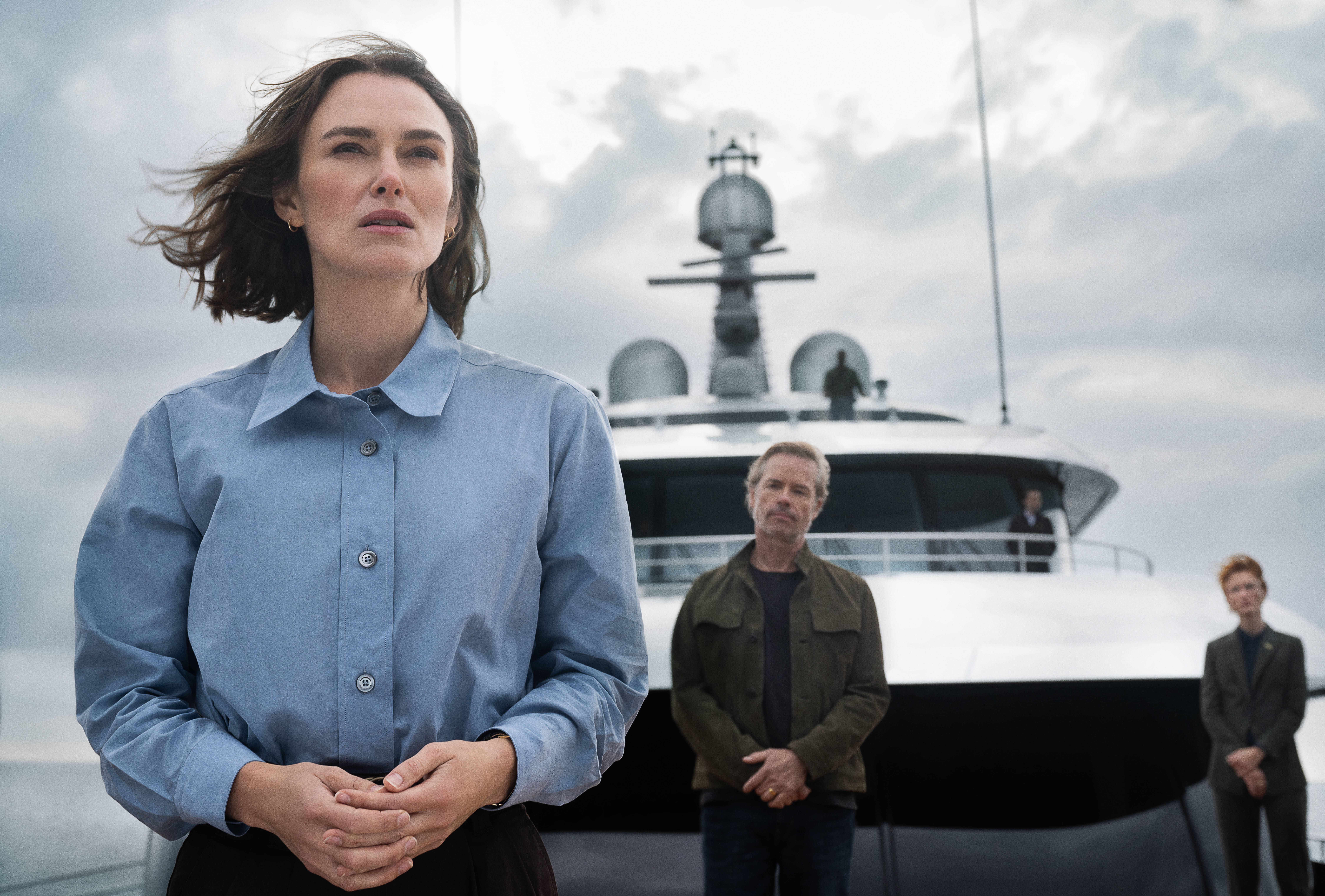
Written by Isabella Baute Arboleda
The Woman in Cabin 10, the new Netflix thriller starring two-time Oscar nominee Keira Knightley, promises a mix of mystery and drama but, despite its significant potential, it does not fully deliver.
The film follows Laura Blacklock (Knightley), a journalist assigned to report on a luxury yacht filled with rich and powerful people. On her first night there, she hears strange noises coming from Cabin 10, which is next to her own. When Laura steps onto her balcony to see what is making the noise, she spots a body in the water and a bloody handprint on the glass dividing the two balconies. She alerts the crew that someone has gone overboard. However, after counting the passengers, the crew insists that no one is missing. But believing what she saw is true and that there is a killer on the yacht, she is determined to find out the truth.
This premise has the potential to be great, especially since it’s based on the popular book by Ruth Ware. Unfortunately, much of the film feels dull and fails to hold the audience’s attention for more than a brief moment. The story falls for different reasons. First, the lack of background information makes it difficult to follow key plot points. Characters often refer to past events without explanation, for example the relationship between Laura and Ben Morgan (David Ajala) is mentioned in the movie several times, but they don’t provide much information why they broke up. Second, the mystery becomes predictable early on; as the “twist” is easy to see coming, which removes tension. Lastly, while the ending attempts to surprise views, it ends up feeling confusing due to weak storytelling and unclear character motivations. In short, the movie is both predictable in outcome and confusing in execution.
Keira Knightley’s performance is the strongest part of the film. Even though the script does not tell us much about Laura, Knightley makes her feel real and emotional. She expresses Laura’s fear, confusion and determination to find the truth through her facial expressions and body language. Knightley’s performance helps the audience understand what Laura is going through the movie.
The rest of the cast has well-known actors (Kaya Scodelario, Guy Pearce, Hannah Waddingham, Art Malik, David Morrissey, et. al) but they do not get enough time on screen to make their character stand out as they appear for a short time and do not have much to say or do. This makes it hard for the audience to connect with them or care about what happens.
On a positive note, the film’s setting does a great job of creating a sense of luxury and mystery that fits the story, the beautiful shots of the yacht, the ocean views, and the elegant rooms make the movie visually appealing. The setting helps build tension by making the audience feel both amazed by the luxury and trapped by the isolation of being at sea.
In the end, The Woman in Cabin 10 did not reach its full potential. The movie lacks background information, which makes the story and characters unclear. Even with a good actor and a beautiful setting it feels unfinished. Some scenes move too quickly, and others leave out details that are needed to understand the events. Important moments are not fully developed, and the mystery loses strength as the story goes on. With more complete writing and stronger character development, the film could have been much better.

